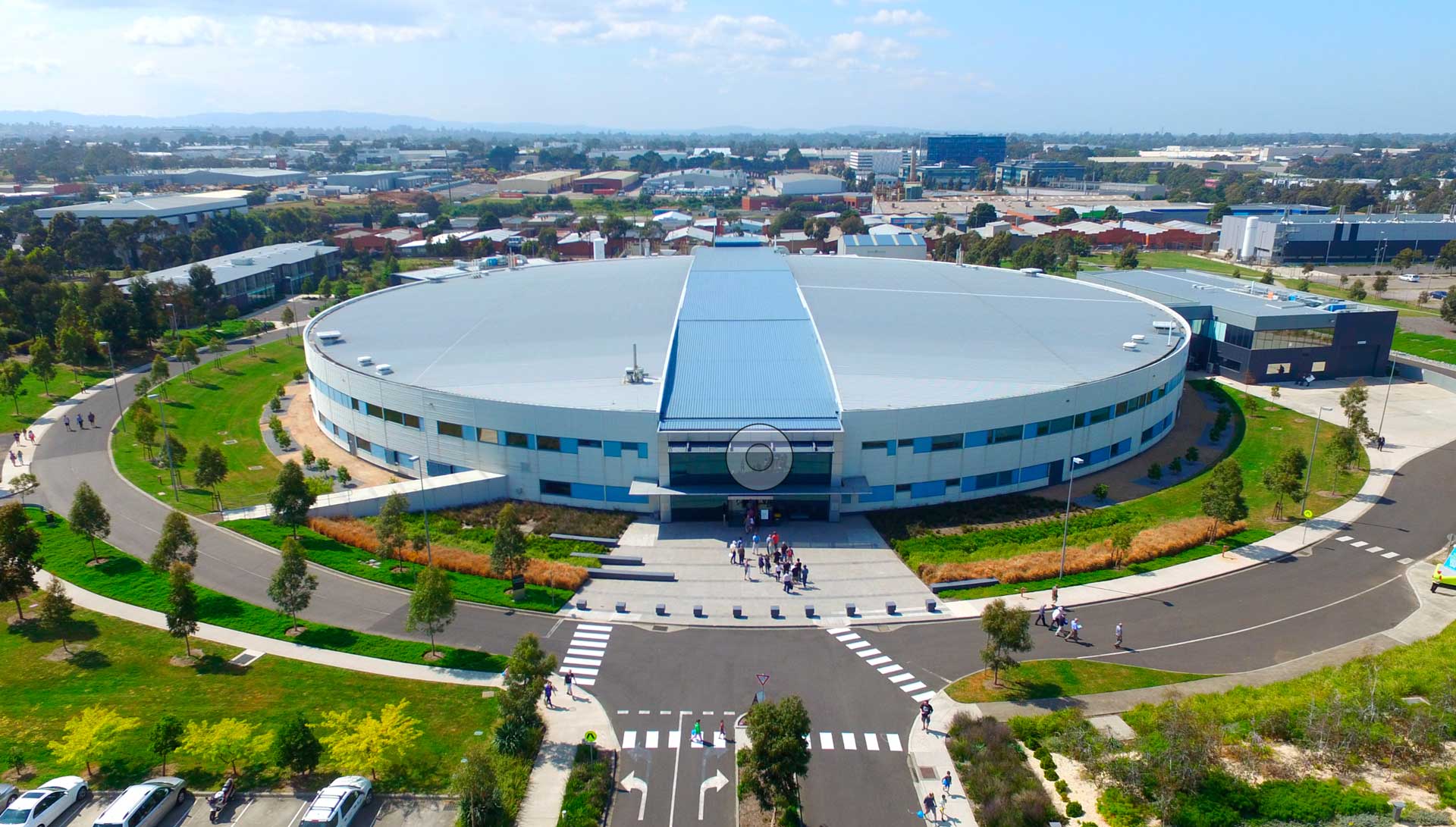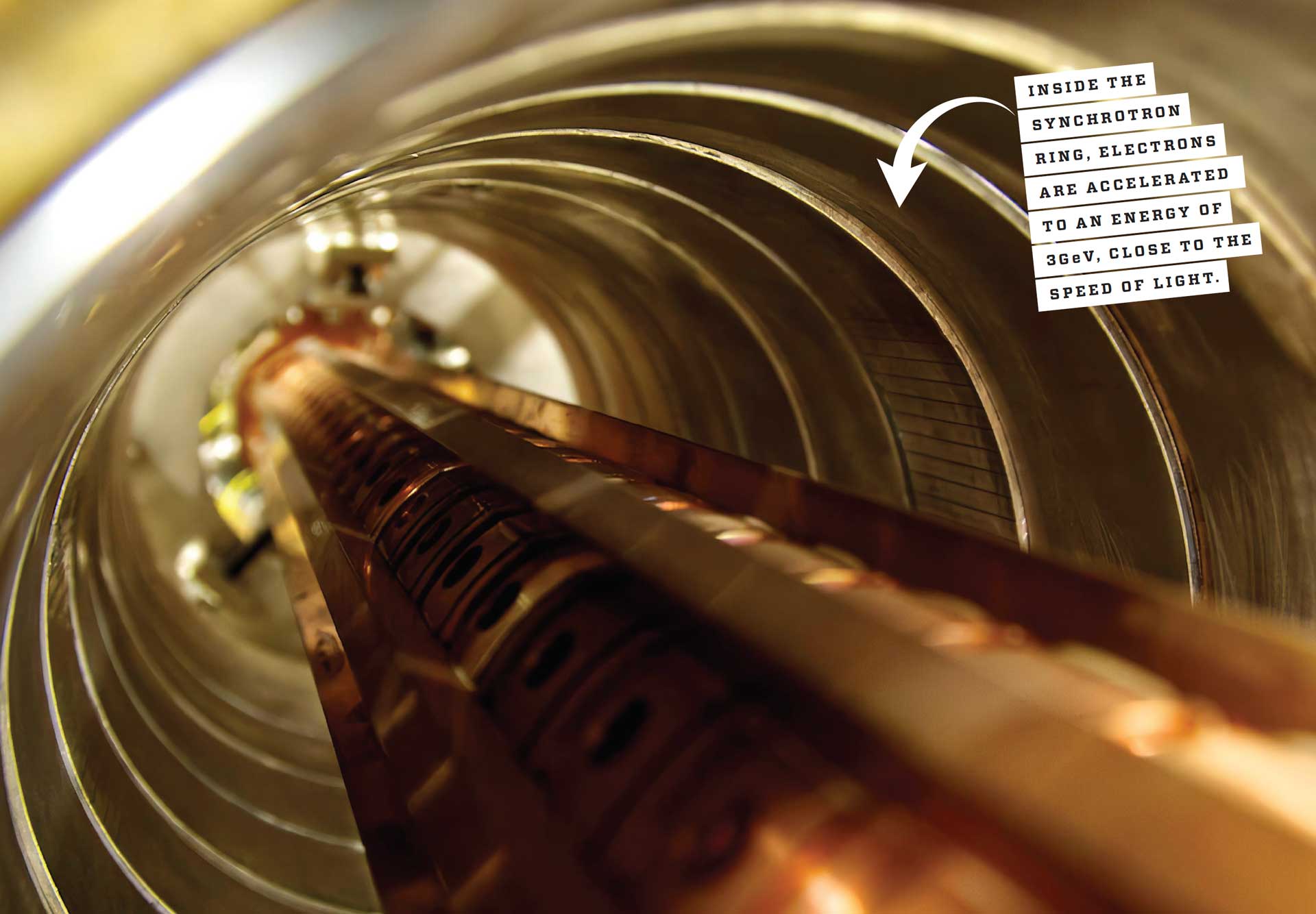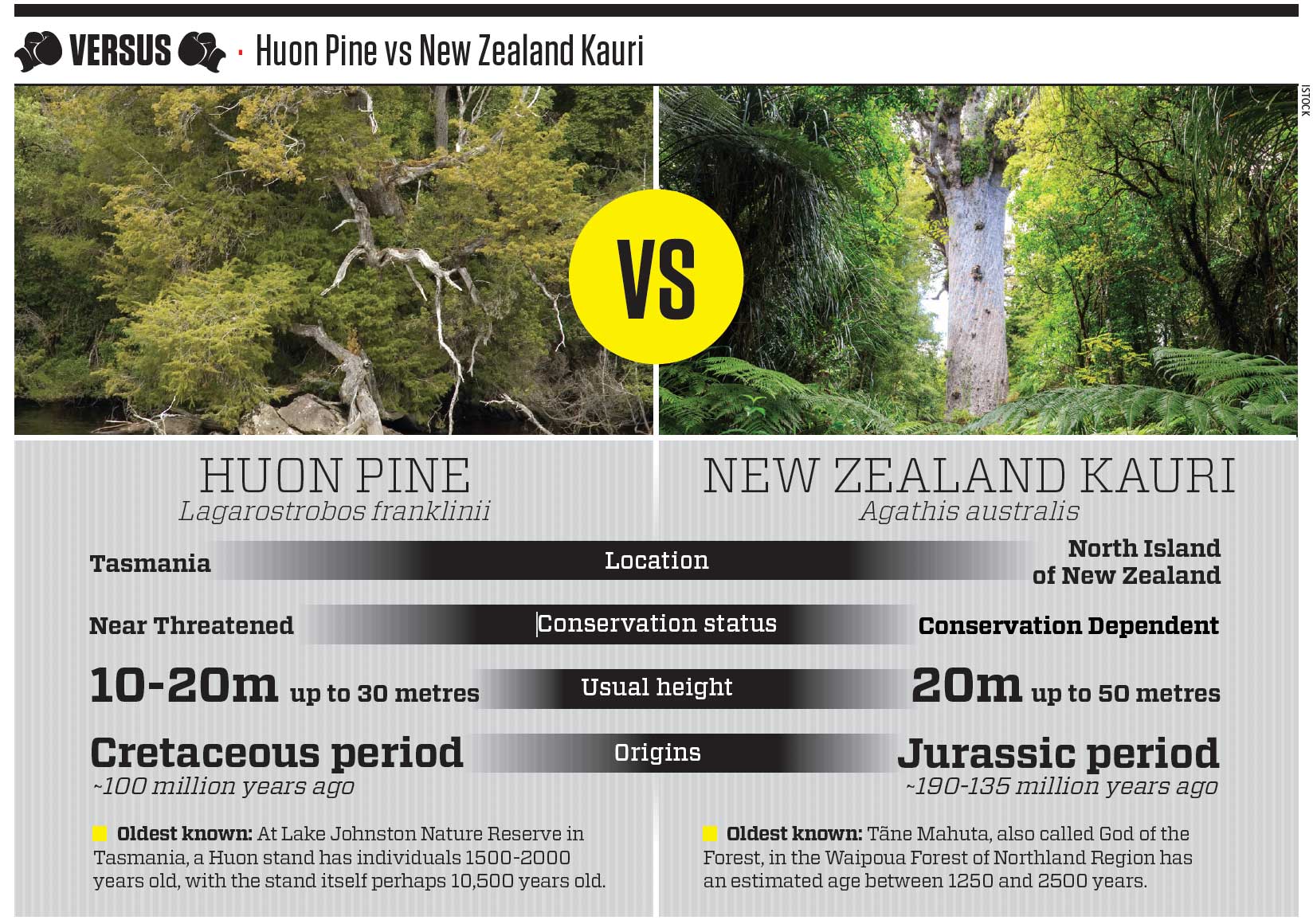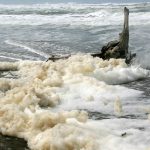Greg Le Blanc and his team are some 22km south-east of the CBD in Melbourne, working underground in the middle of the night. In an enclosed room they huddle over monitor screens, while around them stretches a shiny new facility filling an area the size of a football field, encompassing a vast circular vacuum chamber surrounded on all sides by machinery designed to accelerate and then maintain a beam of electrons travelling at almost the speed of light.
If all goes according to plan, those electrons will be deflected through powerful magnetic fields to create a ‘light’ source a million times brighter than the sun. But if the beam strays by so much a micron from its path as it traverses the circular chamber 1.4 million times a second, it will fail. To keep going, it must be perfectly synchronised with bursts of a powerful electric field, meeting them at exactly the right moment – a time window of less than a billionth of a second. This need for precise synchronisation is how the whole facility gets its name – the Australian Synchrotron.
It is 14 July 2006. Le Blanc and his team of scientists and engineers have already spent six weeks checking and rechecking the many systems, crunching the numbers and tweaking the energies, trying to maintain the beam. They have got close, achieving first one complete revolution of the outer storage ring, then 20, then 80. Nearing the end of another long night, at 3.15 AM one scientist suddenly points to a spot on a screen at the end of a row of monitors. “Look!” he calls to the others, and immediately the team erupts into cheers. This is the moment they have been waiting for. The Synchrotron has achieved ‘first light’.
First light is the moment when the beam is kept in constant motion, generating high-energy X-rays and infrared light that can be used for scientific research. For the physicists and engineers on the project, first light confirms that the entire chain of precision instruments is perfectly lined up, allowing the beam to shine through. And it is no simple process to raise and maintain electrons to a speed at which they could travel around the Earth seven times in one second.

Australia’s circuit of light: From the electron gun (A), the electrons are accelerated into the booster ring (B) where they complete around a million laps in half a second before passing into the storage ring (C). There they release intense radiation which is channelled by the Synchrotron’s 10 beamlines to the ‘hutches’ (D) where experiments are performed.
Keeping the beam alive
The acceleration process starts with a giant electron gun which works not unlike the old cathode-ray-tube TV sets, using thermionic emission to extract electrons and aim them — at an energy of some 90,000 electron volts (90keV) — into a linear accelerator. Within just a few metres this uses electromagnetic radiation in the form of radio frequencies to accelerate the electrons to an energy of 100MeV, already very close to the speed of light. They are then focused, to prevent the beam expanding outward, and pass into a booster ring 130 metres in circumference, where 60 steering and focusing electromagnets keep the electrons inside the stainless steel vacuum chamber while a 5-cell radio-frequency cavity — metallic chambers containing an electromagnetic field — provide an electrical impulse that accelerates them further. An electron spends only around half a second in the booster ring, completing over one million laps to achieve a final energy of 3GeV. Once at their top speed the electrons pass into a storage ring 216 metres in circumference, where they can typically be maintained for up to 20 hours if everything is kept in perfect alignment.
When high-energy electrons are forced to travel in a circular orbit in this way, they release extremely intense radiation. From the storage ring, various ‘beamlines’ are used to channel this radiation and convert it into the type of synchrotron light required for practical experimental use.
Synchrotron light scores over conventional techniques in terms of accuracy, quality, robustness and the level of detail that can be seen and collected; it can also be much faster than traditional methods. Often described as being like an enormously powerful microscope, the synchrotron light reveals the innermost, sub-macroscopic secrets of materials from human tissue to plants to metals and more.
Today, nearly 15 years after first light, Australia’s synchrotron hosts 10 separate beamlines for a broad range of applications: health and biological sciences, earth and environmental sciences, advanced materials, engineering and manufacturing, energy and sustainability science, cultural heritage and archaeology, as well as fundamental physics, chemistry and accelerator science.
Each beamline has an initial photon delivery system (the ‘beamline optics’) to focus and select appropriate wavelengths for the particular research. The experiments then take place in ‘hutches’ that are within radiation-shielding enclosures, to protect staff and visitors. Scientists can’t enter these hutches during data collection, so they use motors and robotic devices to make any adjustments required.

Who gets to use it?
Most of the initial funding for the Synchrotron came from the Victorian Government; however in 2016 the ownership transferred to the Commonwealth Government, and it is operated by ANSTO, the Australian Nuclear Science and Technology Organisation. It is far from being the world’s only or largest synchrotron – the Linac Coherent Light Source in the US and SPring-8 in Japan can both achieve energies of 8GeV, while the biggest colliders use synchrotron-like acceleration to still greater energies. But it is nevertheless one of Australia’s most significant pieces of scientific infrastructure.
Yet remarkably, while any commercial research there requires payment, the Synchrotron is free of charge to researchers who are publishing their results in open literature. Its time is allocated through a peer-review application process, including work by students who have received scholarships from AINSE, the Australian Institute of Nuclear Science and Engineering, and the umbrella network of the Graduate Institute in the ANSTO Innovation Precinct.
Rings of time and climate
One of those scholarships was awarded to Priyadarshini Parsons O’Brien at the University of New South Wales. Her plan was to use the synchrotron’s powers of analysis to unearth Australia’s ancient climate history by radiocarbon-dating partially-fossilised samples of Tasmania’s famous Huon pine trees. The Huon pine is the oldest living tree species in Australia, and is considered the second oldest in the world, with only the North American bristle cone living longer. The oldest Huon trees alive today are between 1500 and 2000 years old, but there’s a twist — individual groups of trees are all genetically identical, with the above-ground trees sharing a common root stock. Those common roots survive far longer than the individual ‘trees’, and represent a single genetic individual: one stand of Huon pines is in the Guinness Book of Records as the world’s oldest colony, believed to be over 10,500 years old.
Huon pine is considered “the prince of Tasmanian timbers”, and is prized as being particularly desirable for use in furniture, boat-building and veneering due to the richness of its colour plus natural oils which provide an insect-repelling fragrance. But the species is protected, and old trees are very rarely cut down. Only a limited amount is released for sale each year by sawmillers who salvage rejected offcuts from the forest floor and logs from river beds, where it survives because Huon pine is rot-proof.
One set of partially-fossilised Huon pines was excavated more than 20 years ago from flood plains in western Tasmania, and these were found to date back over 10,000 years. This offers the possibility of establishing the longest naturally-preserved climate record in the Southern Hemisphere from the information preserved within their growth patterns. Some 250 samples have been taken from the partially-fossilised pines, but there is a gap in the timeline. The current record extends back 3500 years, then contains a short gap before another 1500-year continuous stretch. Priya’s research would attempt to fill in that gap, with field work in Tasmania to find priority pine samples and then prepare them for radiocarbon analysis using the Synchrotron. Once complete, this could establish the longest naturally-preserved climate record in the Southern Hemisphere.
But things did not go according to plan.
“I started my project in February 2020,” says Priya, “and of course it was heavily affected by COVID restrictions. We had to pivot my project and focus instead on a tree-ring dataset of New Zealand kauri, along with samples that could be more easily accessed for chipping.”
The kauri is another ancient conifer, and another species which provided a target for the early woodcutting industry since it grows broad and straight, as high as 50 metres. The kauri is also long-lived and sensitive to climate conditions, and a series of previous research projects has already created a network of 17 chronologies, from both modern kauri sites and ancient kauri wood recovered from bog sites.
“The research goal was to synthesise over 20 years of collection and archiving of ancient material to understand climate trends in the Northland region beyond the limits of radiocarbon dating,” Priya tells us. “As the material had never been comprehensively analysed it was unknown exactly what kind of information was available in the data set, as well as by applying novel methods to analyse the material remotely and computationally.”
Her work included carbon-dating of kauri samples in the Chronos lab at the UNSW Mark Wainwright Analytical Centre, but she notes that the oldest samples are at the 50-55,000-year limit of radiocarbon dating. The Australian Synchrotron’s deeper analysis would allow a further source of dating to confirm and potentially extend her findings, which are already intriguing.
“For the kauri we were able to identify wavelet periodicities at the boundary of radiocarbon dating which indicated climate trends influencing the tree-ring growth over multiple decades at that time, and between multiple kauri sites,” Priya tells us. “Particularly the analysis indicated limited influence of the El Niño-Southern Oscillation on the growth of the kauri.”

Fighting fire with FTIR
Another AINSE Honours Scholarship went to Nikola Ristovski, Honours student from the University of Western Australia, who is working alongside researchers from ANSTO and UWA to uncover details about the deep history of Indigenous culture in Australia over the past tens of thousands of years.
Nikola’s team is focusing research on how Indigenous Australians used and controlled fire in their daily lives.
“Evidence of fire is frequent in the archaeological record, but the further back you look, the more ambiguous its nature becomes,” says Nikola. “My thesis considers the potential of micro-archaeological techniques like infrared spectroscopy and scanning electron microscopy to determine the heating temperature of archaeological bone and charcoal.”
The Australian Synchrotron’s infrared spectroscopy beamline delivers polarised infrared beams up to 100 times more intense than conventional sources. By using Fourier Transform Infrared Spectroscopy (FTIR) to microanalyse charred sediment and bone fragments from archaeological sites in north-western Australia and then comparing them to a reference collection he has built up himself, Nikola aims to accurately estimate the temperature at which these human-controlled fires burned, and the extent of the fires. This knowledge could provide important clues about how fire was used by Indigenous Australians tens of thousands of years ago, where evidence is scarce or complex.
“FTIR and X-ray diffraction work great alongside the microscopic study of undisturbed sediments,” says Nikola, “and can sometimes be applied directly to these microscopic slides to better understand spatial relationships between differentially heated artefacts and how they change through time.”
Nikola has already analysed his first set of samples under the light of the Synchrotron’s FTIR beamline.
“We managed to sample and estimate the temperatures of about 80 bone fragments in thin sections, which showed that FTIR could be a viable method for predicting temperatures of cultural fire activities”, he tells us. “We realised that better sample preparation would help, and accuracy may depend on the condition of bone. We’ve applied for another go at the FTIR beamline later this year where we’ll analyse bone and charcoal from another site called Riwi Cave. We predict it’ll give us better results as the site contains distinct fire features, with less altered organics which seem to be burned at higher temperatures.”
Core expertise
Nikola’s is not the only Synchrotron research targeting the vital issue of bushfire and land management. Ellie-Rose Rogers from the University of Melbourne has been conducting radiometric dating on sediment cores collected from under the rainforest of Surrey Hills in northern Tasmania. By combining this data with tree-ring analysis, Ellie-Rose and a team of researchers from ANSTO and the University of Melbourne aim to build a timeline of exactly how this area of land changed from the open forest and treeless plains described by British surveyors in 1828, into the rainforest which covers most of the area today.
“These techniques allow us to test the notion that the western Tasmanian landscape was constructed by Aboriginal people and that contemporary rainforest in this region overtook open fire-maintained vegetation following the British invasion,” she says.
This window into the past will allow an accurate assessment of how the fuel load has changed over the centuries – and how far the fuel load might be decreased through a return to traditional techniques.

BRIGHT future
Fifteen years after Greg Le Blanc and his team achieved ‘first light’ at the Australian Synchrotron, then, the ANSTO facility continues to shine its powerful light into new areas of research. With plans for eight further beamlines to be constructed under the ongoing ‘Project BRIGHT’, the capacity and output of research will be limited only by the imagination of the scientists who seek to use its extraordinary powers.








